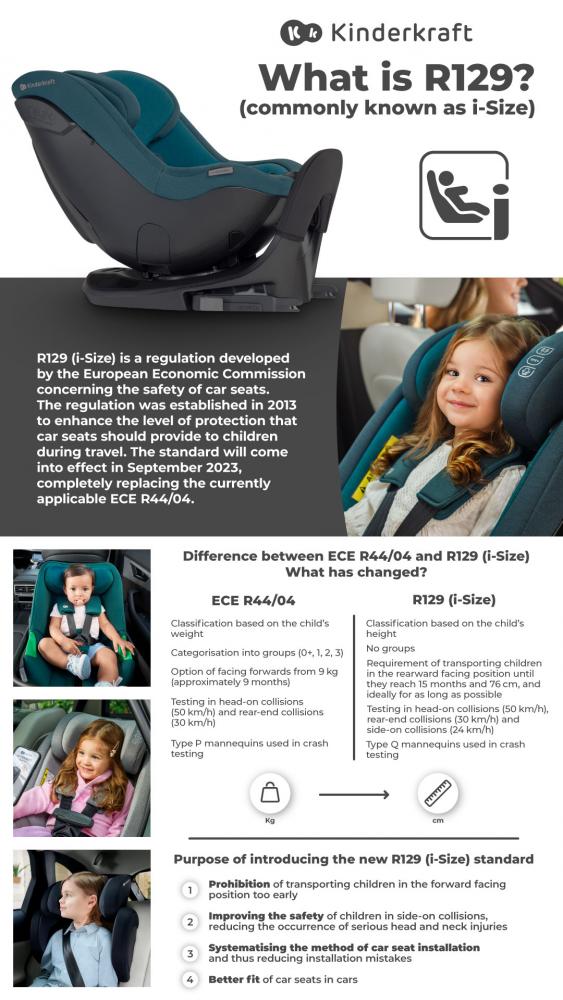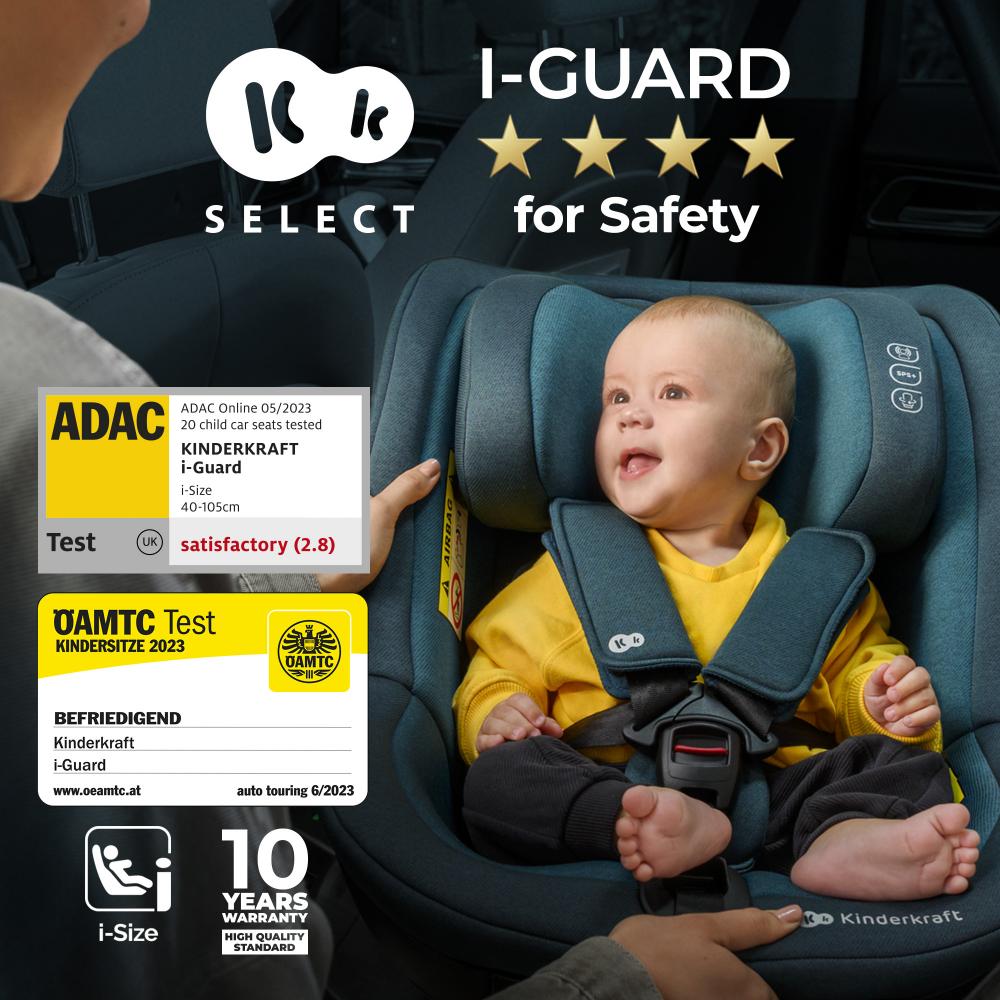What should you focus on when choosing a car seat?

We all want our children to have the best lives possible. However, the huge number of car seats that have flooded the market in recent years can leave your head spinning, especially if you’ve become a parent only recently. RWF, ADAC, ISOFIX, TOP TETHER – what are these mysterious terms, and do you really need them in your child's car seat?
How to choose the right car seat for your child
When choosing a car seat, the priority is to choose one that’s appropriately suited to your youngster’s height, weight and age. The next criterion – equally as important as the first – is the safety and comfort of the little passenger and the entire family. Remember that the car seat must also be positioned well against the car’s bench seat! Not all car seats can be installed in all cars, partially due to the varying angles of incline of the bench seat and the absence of ISOFIX connectors!
Regulation R129 (commonly known as i-Size) – adjusting the car seat to the child's height
Regulation R129 i-Size is related to the safety of car seats and places a greater emphasis on protection compared with car seats that don’t qualify for the i-Size category.
One of the key improvements in these new regulations is the replacement of P-type dummies during tests with Q-type dummies. The new Q-type dummies are equipped with a greater number of sensors, allowing for a more accurate representation of a child's body structure and reactions during road accidents. As a result, the new car seats offer an even higher level of protection, especially in the child's neck, head, and sides, particularly during side impacts.
Moreover, the regulation also requires rearward facing installation of car seats up to at least 15 months of age and 76 cm in height. Specialists from around the world agree that the rearward facing position provides the best protection for youngsters against injury in an accident. It ensures better protection for the spine, neck and pelvis in the event of sudden braking. An example of such a car seat is Kinderkraft’s I-GUARD, which is one of the first i-Size car seats by this international brand.
It's also worth mentioning that since July 2013, car manufacturers can apply for i-Size approval for their vehicles. Unlike the ISOFIX standard, i-Size approval is not mandatory.
An important benefit resulting from the introduction of i-Size regulations is the active involvement of car seat and car manufacturers in the legislative process. As a result of this collaboration, it has become possible to even more accurately tailor car seats to various car models. This means that every i-Size compliant car seat will fit any i-Size approved vehicle.

Installation in the rearward facing position – RWF and TOP TETHER
We mentioned RWF above. This simply means a car seat installed facing away from the direction of travel. It can be a car seat from the old 0–13 kg weight category, or one that meets the i-Size category, which will soon be the only applicable one and which is based on height limits up to 15 months of age and up to 76 cm in height.
Remember – never install an RWF car seat in the front (passenger) seat if it has an active airbag!
The TOP TETHER strap is often used to increase safety in the rearward facing position if the car seat doesn’t have a support leg. TOP TETHER is also used in car seats installed in the forward facing position (76–105 cm). This is a long section of strap that’s finished with a hook located in the rear part of the car seat. It’s installed in a special spot in the car designated for this, making the car seat more stable. Don’t forget to always tighten the TOP TETHER strap, especially if you use a swivel car seat!
Certificates – ADAC and ÖAMTC
Not all car seats offer the same guarantee of protection in the event of a collision. Luckily, there are several independent institutions that put car seats through special, additional crash testing in their laboratories. And most importantly, the testing organisations don’t inform the manufacturers about being included in the tests – they’re only informed after the car seats are selected for testing. Manufacturers also can’t ask for their products to be tested! As a result, these tests and ratings are independent and credible.
The most popular organisations in the world are: ADAC, Stiftung Warentest and ÖAMTC. In accordance with the German standard, the lower the rating, the better. 0.0–1.5 means very good, and 4.6–5.5 is very poor.
The above-mentioned i-GUARD car seat has received a good safety rating. The manner of installation and instruction manual were rated slightly lower, which resulted in an overall rating of 2.8, i.e. a satisfactory level.

ADAC results for Kinderkraft’s I-GUARD:
|
Safety |
2.0 |
|
Installation/instruction manual |
3.2 |
|
Ergonomics |
2.1 |
|
Absence of harmful materials |
1.8 |
|
Easy to clean |
2.5 |
* Don’t forget that in ADAC, the lower the rating, the better! 1.5–2.0 means very good, and 4.6–5.5 is very poor.
